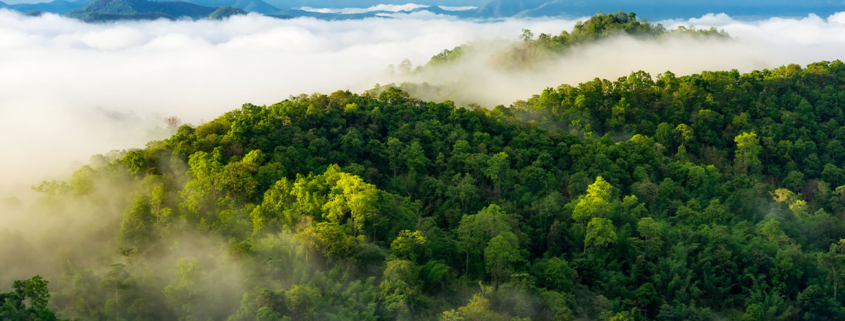What Does the Rainforest Do? A Guide to the Tropics
Rainforest preservation may be a popular concern that crops up on your feed from time to time, but the significant role rainforests play in promoting life for all of Earth’s species isn’t always fully appreciated. Here’s a closer look at what these magnificent ecosystems do for the planet.
Where Are Rainforests Located?
The largest rainforests are located in the Amazon River Basin in South America, the Congo River Basin in western Africa, and in Nicaragua, Australia, and areas of Southeast Asia. In general, these areas of complex biodiversity are located in areas close to the equator, between the Tropic of Cancer and the Tropic of Capricorn. But other “temperate” rainforests exist across the globe — including one in Alaska.
What Do Rainforests Do?
Regulate the Climate
In general, trees remove carbon dioxide and store it in their leaves, stems, and roots during photosynthesis. Due to their extreme density of trees and plants, rainforests absorb tremendous amounts of carbon dioxide from the earth’s atmosphere. This is important, because excess carbon dioxide is a heat-trapping gas that contributes to warming of the planet and resulting climate change. According to NASA, “Human activities have raised the atmosphere’s carbon dioxide content by 50% in less than 200 years.”
Even the world’s largest rainforest in the Amazon has now potentially become a carbon producer, due to factors like wildfires purposely set to clear land for industry and agriculture. But research indicates natural climate solutions such as rainforest conservation and restoration could still provide up to a third of the global climate mitigation needed to reduce global warming.
Store Freshwater
Rainforests essentially act like a huge sponge, and are suspected to store more than half of the earth’s rainwater. But they also give that water back to us. All trees draw water from the ground to sustain themselves, and release excess back into the atmosphere. By this process, the vast number of rainforest trees actually create clouds, resulting in rain that falls all across the globe. Scientists have discovered that even rainfall in the U.S. Midwest is influenced by the Congo’s rainforests, and moisture that cycles through the Amazon can become rainfall in Texas.
Provide Habitat for Wildlife
Although rainforests cover just three percent of the earth’s surface, they contain more than half of the planet’s terrestrial species. They are home to a staggering 30 million species of animals and plants, and at least two-thirds of the entire species of all life on Earth. Many of these animals are endangered, including jaguars, giant otters, Amazon river dolphins, and hyacinth macaws. Preventing extinction is critical to keeping the ecosystems of the rainforest within balance.
Supply the Global Pharmaceutical Market
While more than 40,000 plants have been scientifically classified in the Amazon rainforest, many remain yet unknown. Of those that have been studied, several have important medicinal properties. For example, the Quechua people — an indigenous group living in Peru and Bolivia — discovered quinine in the bark of rainforest trees. Though you may think of quinine as just an extra ingredient in tonics for G&Ts, it’s actually a muscle relaxant and also the first medicine used to effectively treat malaria.
The rainforest is also home to vincristine and vinblastine, which are derived from flowers found in Madagascar. These anti-cancer drugs were first used to treat diabetes and were later found to help stop cancer cells from dividing.
With so many yet-undiscovered species in the world’s rainforests, who knows what other medical miracles we may continue to find?
While the trees that scatter our lawns don’t have the ability to grow wild like those in the rainforest, they still deserve careful tending. If your property needs tree maintenance, request a free assessment from us online or by calling (404) 252-6448.










